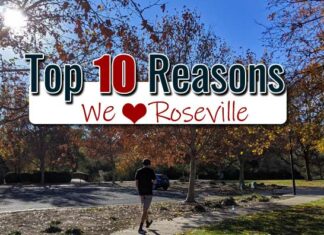In 1854, Boston businessman George Whitney visited San Francisco to see the four oldest of his six sons. The four had come to California individually at various times during the Gold Rush and profited nicely as merchants, mainly by importing scarce goods from the East Coast and selling them at high prices to miners and others connected with the gold rush.
George saw a commercial opportunity when his sons called his attention to the poor quality of California wool and the premiums that Californians were willing to pay for high quality wool imported from Australia. So George consulted with William Wells Hollister who ran Saxony sheep on 150,000 acres near his namesake town in San Benito County. On Hollister’s advice George decided to import Spanish Merino sheep from Australia and crossbreed them with some of Hollister’s Saxonies to get a finer, heavier fleece.
George’s sons decided to join the enterprise and in 1855 or early 1856 George’s oldest son George Whitney Jr., headed for Australia to buy the Merinos.
The youngest of the four sons, Joel Parker Whitney, known as Parker then, told his father of the beauty and good agricultural potential of an area in South Placer County that he had passed on his way to a short stint laboring in the Auburn gold mines when he had first arrived in California in 1852 at age 17. In 1856, George Jr. returned from Australia with 120 Merino ewes and the Whitneys hired a herder to run them with a few of Hollister’s Saxony bucks on open rangeland near the place that Parker had identified.
George Jr. died shortly thereafter, possibly from the rigors of traversing 7,500 miles of ocean while tending a flock of sheep.
The crossbreeding project was successful and the Whitney wool was in high demand. So George decided to give the operation permanence. In 1857 he established a sheep ranch with the purchase of 320 acres in the midst of thousands of acres of unoccupied Placer County land. That purchase, which became known as The Whitney Ranch, was a few miles west of a granite quarrying community that later would supply stone for the transcontinental railroad and become a passenger stop which the railroad would name Rocklin, California in 1864.
George and his sons started adding pasture to the ranch in 1860 and continued to expand with several purchases throughout the decade. For land that they bought from private individuals, the federal government and the railroad they paid from ninety cents to 2 dollars per acre. As they continued to expand they recruited outsiders as homesteaders and after a few years bought out the homesteads for up to 5 dollars per acre.
But homesteader O.T. Brown refused to sell. He owned the horseshoe shaped valley near the middle of the ranch called Brown’s Valley, the site of the today’s Whitney Oaks Golf Course and the surrounding homes. So the Whitneys leased Brown’s Valley for 25 dollars per month. There might have been an unrecorded agreement between Brown and the Whitneys because when Brown died in 1901 he had bequeathed the valley to Parker and it became part of the ranch.
Even though Parker entered California mercantile pursuits later than his brothers he had the greatest financial success. He made frequent trips to the East Coast to make large purchases, shipped the goods around Cape Horn or via the Isthmus and then hurried to meet the shipments at San Francisco where he ensured their quick sale. He sold many items before they arrived.
Also, after a short time as a Union officer during the Civil War, Parker promoted Colorado minerals in Europe and invested in several successful Colorado silver mines. By 1870 he had become wealthy from these and a variety of other smart investments. It was mostly Parker’s money that expanded the ranch.
By the early 1870’s the ranch consisted of about 18,000 acres bordered very roughly by Lincoln and Roseville on the north and south, by Rocklin and the trans-Sierra railroad tracks on the east and by the tracks near today’s Indian Casino on the west. This is the area into which Rocklin has been expanding since the late 1970’s.
By the time George Whitney died in 1873, Parker had gained control of the majority of ranch assets. He bought out his brothers’ remaining interests that year. Even though he continued with his international business activities the ranch continued to absorb his creativity. He wanted to diversify away from dependence on his sheep business and into a wider variety of other agricultural opportunities. But for this he needed water.
Next Time: The Magnificent Landed Estate of the Honorable J. Parker Whitney
The foregoing is from a variety of sources including Fortune Built by Gun by Richard A. Miller
(21+ years strong)
Welcome to the brighter side!
Get in front of local customers! 24/7 (365)





















